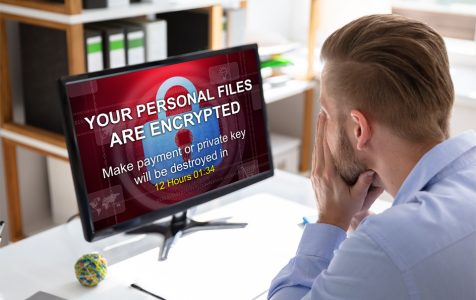If you are reading this information, you’re lucky; not so many people get the opportunity to find out about Yogynicof ransomware. If you are reading this article because the Yogynicof ransomware has attacked you, we’ve put up this information to guide you on how to remove it and get rid of it completely. If you’re reading just to find out, we’re glad because you’ll be prepared for it.
Yogynicof Ransomware Explained
Yogynicof ransomware is a dangerous file-encrypting ransomware. Once it is installed in your system, it encrypts your files and folders and modifies their names. It then generates a ransom note informing you how to pay the ransom for your files and folders to be decrypted.
Yogynicof ransomware mainly targets devices running on Windows operating systems. It can run on all versions of Windows, including Windows 10/11. As soon as it gains entry into the PC, the Yogynicof ransomware changes the Windows registry entries, allowing it to automatically activate itself with each Windows reboot.
This ransomware encrypts files or folders in the PC and changes their names by inserting a certain number as if it is numbering the files. For example, if a folder has three files, then Yogynicof ransomware will encrypt the files then renames them by inserting “1”, “2”, and “3” on the file names.
After encrypting all the files successfully, the ransomware leaves not less than 20 notes on your desktop. All of the notes are numbered as “Read-me! 0.html”, “Read-me! 1.html”, “Read-me! 2.html,” Read-me! 1.html”, …” Read-me! 21.html”.
The notes inform users that all their important files have been encrypted, requiring them to pay a ransom (often $500) within 48 hours for the files to be decrypted. The money has to be transferred into the attackers’ cryptowallet, and it can only be paid in Monero cryptocurrency. The attackers even give users an email address yogynicof@protonmail.com to contact them using an assigned unique code as a subject.
How to Remove Yogynicof Ransomware
You can remove the Yogynicof ransomware in two ways:
- Automatically using an anti-malware tool, or,
- Manually from your PC.
Instant Automatic Removal
The instant, automatic removal of malware is an easy and quick option. You’ll only need a reputable anti-malware program, such as Spyhunter or Malwarebytes, to permanently remove the Yogynicof ransomware.
Ensure you download the anti-malware from the official website. And then, conduct a deep scan in safe mode, using the anti-malware to remove all the registry files of the ransomware.
Yogynicof Ransomware Removal Instructions: Manual Removal
Ther are two steps to remove the Yogynicof Ransomware and get rid of it:
- Step 1: Remove it through “Safe Mode with Networking”
- Step 2: Delete Yogynicof Ransomware using “System Restore”
Remove Yogynicof Ransomware through “Safe Mode with Networking”
(We recommend the manual method only for advanced computer users because the problem might be lengthy and complicated.)
- Investigate all your browser’s shortcuts.
Investigate your browsers’ shortcuts for any signs of the Yogynicof ransomware by right-clicking on them to change their properties. Check if the Yogynicof ransomware’s components or any other site is at the end of browser’s shortcut target (command line.) If it is, remove it and save the changes. - Reboot your PC to “Safe Mode with networking”> then end the malicious process from “Task Manager.”
- Disable Yogynicof ransomware from auto-startup apps.
- Remove/Uninstall Yogynicof ransomware from Programs and Features.
Go to Programs and Features and investigate the list of installed programs. Locate the ransomware and other unwanted, intrusive, or recently installed programs and uninstall them. - Stop all the ransomware processes on the Task Manager.
Open the Task Manager and stop or close all processes related to the Yogynicof ransomware in their description. You’ll need to discover the directories where these processes start by searching for strange or random file names. - Inspect the Windows services for pushails.com and remove them.
Press Win+R and type in: services.msc, then press OK. Locate and disable services that have random names or contain Pushails.com in their description or name. - Disable Yogynicof ransomware on Task Scheduler.
Key in Win+R, hen type in ‘taskschd.msc,’ and press Enter to open Windows Task Scheduler. Delete any task that you think is related to the Yogynicof ransomware and disable unknown tasks that have random names. - Clear your Windows Registry of Yogynicof ransomware.
Key in Win+R, type in ‘regedit.exe,’ and enter. Locate and delete all values and keys containing Yogynicof ransomware Registries.
How to Get Rid of Yogynicof Ransomware
If the malware persists, conduct a System Restore.
To get rid of the malware using System Restore, you’ll need to have a professional anti-malware tool and conduct a full system scan first to remove all the malicious detectable files. You should only use System Restore if the Safe Mode with Networking doesn’t yield the needed result.
Conclusion
We understand how annoying the Yogynicof ransomware and other malware entities can be, especially considering the potentially harm they bring to your PC and how they expose you to other malicious activities. We believe this article has given you a good insight into Yogynicof ransomware, including how to get rid of it. If you have any comments or more information regarding this ransomware, kindly let us know through the comments section.
